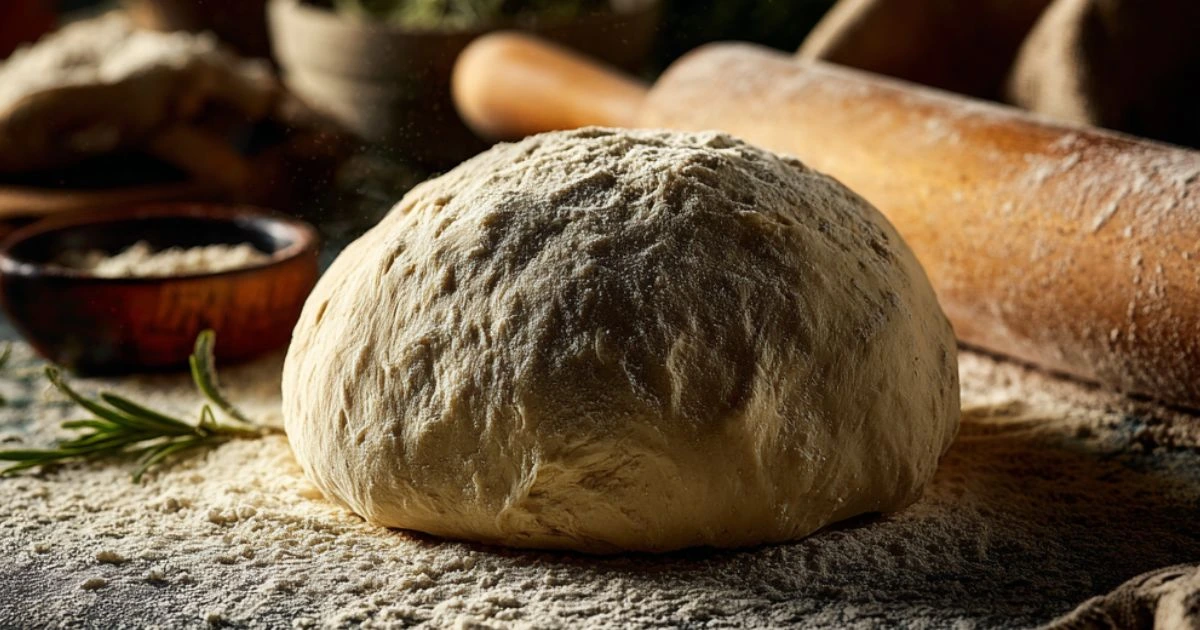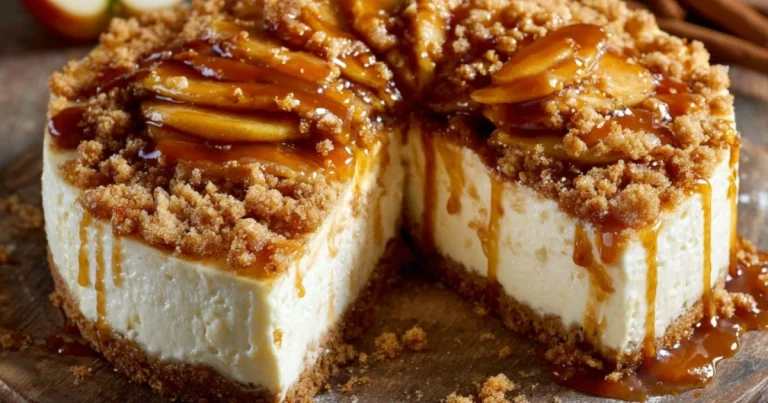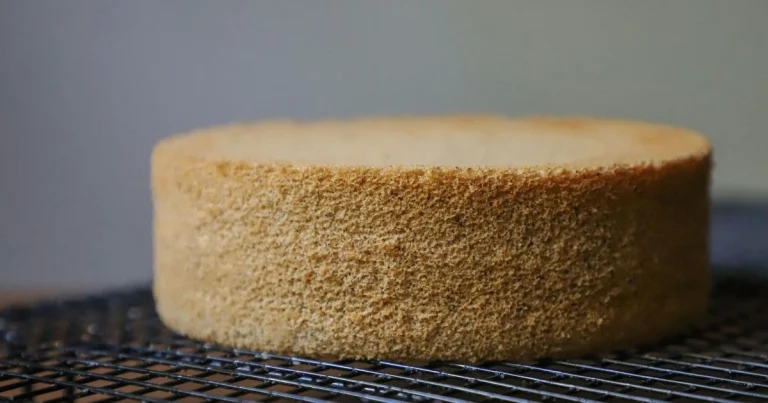Homemade Pizza Dough: The Ultimate Guide to Making Pizza from Scratch
Making homemade pizza dough is easier than you might think. With a few simple ingredients and a little bit of time, you can create the perfect base for your favorite pizza toppings. Whether you’re a beginner or an experienced home cook, this guide will walk you through everything you need to know about making pizza dough at home.
Why Make Homemade Pizza Dough?
While store-bought pizza dough is convenient, nothing compares to the freshness and flavor of homemade pizza dough. Here’s why making your own dough is a great idea:
- Better flavor and texture: Homemade dough has a superior taste and texture compared to pre-made dough.
- Control over ingredients: You can use high-quality, organic ingredients without any preservatives or artificial additives.
- Customization: You can easily adjust the dough to suit your preferences, whether you like a thin crust or a thick, chewy base.
If you’re curious about why making pizza dough at home is so rewarding, check out The Science of Pizza Dough.
Ingredients You Need for Homemade Pizza Dough
To make pizza dough from scratch, you’ll need just a few basic ingredients. Here’s what you’ll need:
- Flour: For the best dough, use bread flour or 00 flour. These types of flour have a higher protein content, which helps the dough rise and develop the perfect texture.
- Yeast: You’ll need active dry yeast or instant yeast. Instant yeast doesn’t need to be proofed, which makes it more convenient.
- Water: Warm water (around 110°F or 45°C) helps activate the yeast.
- Salt: Adds flavor and helps control the yeast’s activity.
- Olive oil: Adds flavor and richness to the dough, making it more elastic.
If you want to explore more about ingredients for pizza dough, here’s a helpful article on How to Store Homemade Pizza Dough.
Step-by-Step Guide to Making Homemade Pizza Dough
Making homemade pizza dough is straightforward, but it requires patience and attention to detail. Follow these easy steps for a perfect dough every time.
1. Mixing the Dough
In a large bowl, combine the following:
- 3 cups of bread flour or 00 flour
- 1 packet of instant yeast (about 2¼ tsp)
- 1 tsp of salt
- 1 tbsp of sugar (optional, to help activate the yeast)
Slowly add in 1 cup of warm water and 2 tbsp of olive oil. Stir until the dough begins to come together.
2. Kneading the Dough
Place the dough on a floured surface and knead for 8-10 minutes until it becomes smooth, stretchy, and lightly tacky, but not overly sticky. If the dough feels too wet, incorporate a bit more flour. If it appears too dry, add a touch of water.
For stand mixer use, knead with the dough hook on low speed for around 5-6 minutes.
3. Proofing the Dough
Once kneaded, place the dough in a lightly oiled bowl and cover it with a damp cloth. Let it rise for 1-2 hours in a warm, draft-free place, or until it doubles in size.
Pro tip: If you want even more flavor, try letting your dough rise slowly in the refrigerator overnight. This method, known as cold fermentation, adds extra depth to the flavor.
You can learn more about this process in Why Use Bread Flour for Pizza Dough?.
4. Shaping the Dough
After the dough has risen, punch it down gently to release any air bubbles. Transfer it to a floured surface and roll or stretch it into your desired shape. Whether you prefer a thin crust or a thick, chewy base, shaping the dough is an important step in achieving the perfect pizza.
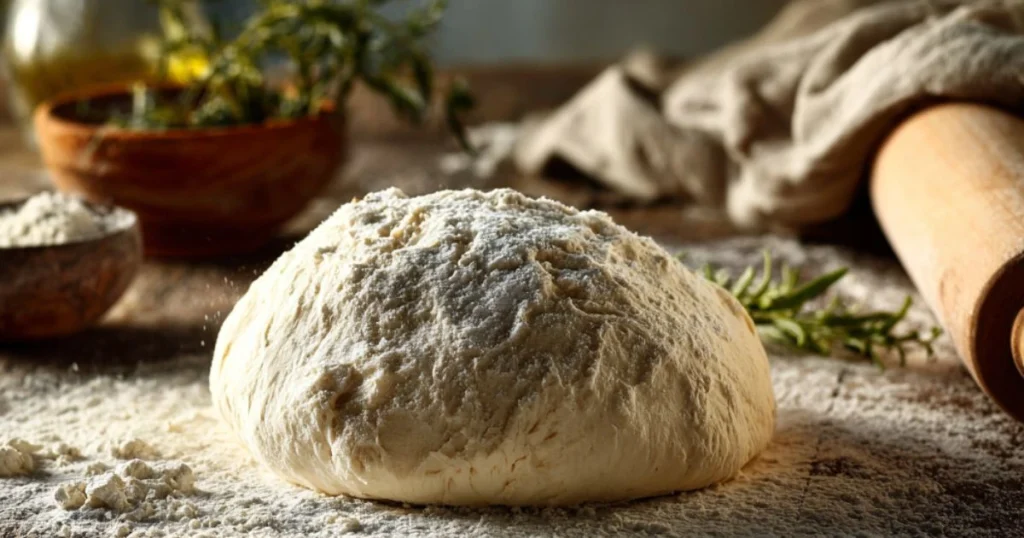
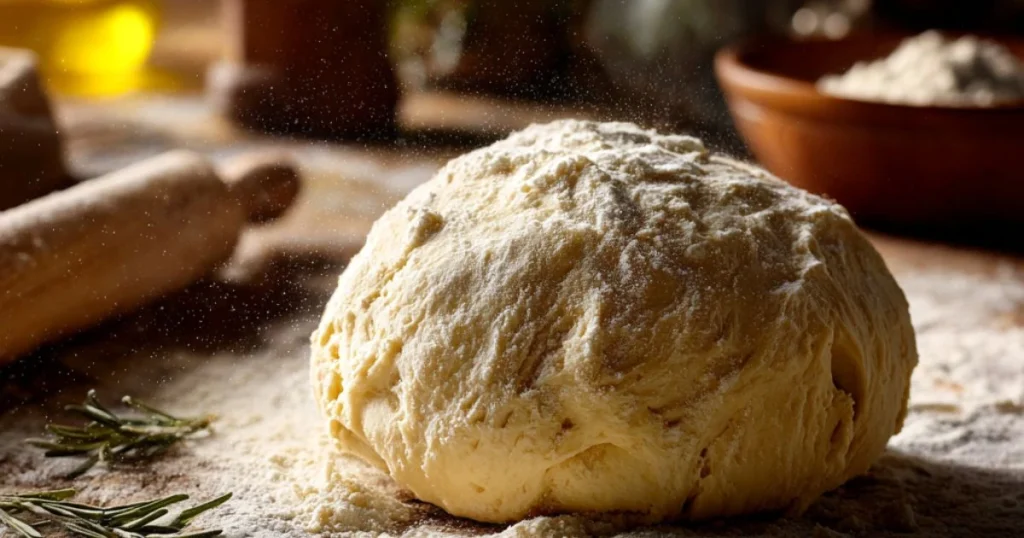
Tips for Perfect Homemade Pizza Dough
Making homemade pizza dough is a rewarding experience, but achieving the perfect texture and flavor can require a bit of practice. Here are some expert tips to ensure your dough turns out perfectly every time:
1. Use the Right Flour
The type of flour you use plays a key role in the texture of your pizza dough. For the best results, opt for bread flour or 00 flour as they have a higher gluten content, which gives the dough its chewy texture and helps it rise better. If you’re aiming for a softer, thinner crust, all-purpose flour can also work well.
2. Don’t Overwork the Dough
Kneading your dough is essential, but overworking it can lead to a tough crust. Knead just until the dough becomes smooth and elastic. If you’re using a stand mixer, about 5-7 minutes on medium speed should be enough.
3. Let the Dough Rest
Resting the dough allows the gluten to relax, making it easier to stretch and shape. After kneading, cover the dough and let it rise for 1-2 hours in a warm environment, or place it in the fridge for a slow rise (up to 24 hours) to develop more flavor.
4. Proof Your Yeast
Make sure your yeast is active! If you’re using active dry yeast, proof it in warm water (around 110°F or 45°C) with a pinch of sugar. If it’s bubbly after 5-10 minutes, it’s ready to go.
5. Use a Pizza Stone or Steel
For a crispy crust, bake your pizza on a preheated pizza stone or baking steel. These surfaces retain heat well, giving the bottom of the crust that perfect crispness.
6. Don’t Overload with Toppings
While it’s tempting to pile on the toppings, too much can weigh down the dough. Use a light hand with cheese and sauce for a crispier finish.
Follow these tips, and you’ll be on your way to making restaurant-quality homemade pizza dough at home!
Variations of Homemade Pizza Dough
While the classic homemade pizza dough recipe is delicious on its own, there are several exciting variations you can try to suit your dietary preferences or experiment with different flavors. Here are a few options to consider:
1. Whole Wheat Pizza Dough
For a healthier alternative, swap out half of the bread flour with whole wheat flour. Whole wheat flour adds a slightly nutty flavor and provides extra fiber. The dough will be a bit denser than traditional white flour dough, but it will still bake up beautifully. If you prefer a lighter texture, you can use a 50/50 mix of whole wheat and all-purpose flour.
2. Gluten-Free Pizza Dough
If you need a gluten-free option, you can make pizza dough with gluten-free flour blends. These blends typically contain a mix of rice flour, tapioca flour, and sometimes potato flour. Be sure to include a binder like xanthan gum or guar gum to help hold the dough together. While the texture will be different from traditional dough, it will still result in a satisfying crust when baked.
3. Neapolitan-Style Pizza Dough
For a more traditional approach, you can make a Neapolitan-style pizza dough. This type of dough uses 00 flour, a finely ground Italian flour that creates a super soft and chewy crust. Neapolitan dough is typically fermented for 24 hours to develop deeper flavors and is best baked in a wood-fired oven for that authentic Italian pizzeria taste. If you’re baking at home, a pizza stone or steel will help achieve that perfect crispy crust.
4. Cauliflower Pizza Dough
For a low-carb alternative, you can use cauliflower to make a pizza crust. Cauliflower dough is made by pulsing steamed cauliflower into small pieces, then mixing it with cheese, eggs, and seasoning. The result is a lighter, low-carb crust that’s perfect for those on a keto or paleo diet.
5. Herb-Infused Pizza Dough
If you like a bit more flavor in your crust, try adding fresh or dried herbs to your dough. Popular choices include oregano, rosemary, or garlic. Simply mix the herbs into the flour before adding your wet ingredients for a fragrant, savory dough.
Each of these variations allows you to tailor your pizza to your dietary needs or flavor preferences, creating a unique and tasty experience every time!
FAQ Section on Homemade Pizza Dough
1. Can I make pizza dough ahead of time?
Yes, you can make pizza dough ahead of time. After it rises, you can refrigerate it for up to 3 days or freeze it for up to 3 months. Just let it come to room temperature before using.
2. Why is my pizza dough too sticky?
If your dough is too sticky, it may be due to too much water or humidity in the air. Add more flour, a little at a time, until the dough becomes soft and slightly tacky.
3. How long should I let the dough rise?
The dough should rise for 1-2 hours at room temperature, or you can refrigerate it for a longer, slower rise (up to 24 hours).
4. Can I use instant yeast instead of active dry yeast?
Yes, you can use instant yeast instead of active dry yeast. Instant yeast doesn’t need to be proofed and can be added directly to the dry ingredients.
5. How do I store leftover dough?
Store leftover dough in an airtight container in the refrigerator for up to 3 days. You can also freeze it for future use.
Conclusion
Making homemade pizza dough is a fun and rewarding process. With the right ingredients, tools, and a little patience, you can enjoy a fresh, flavorful pizza that’s much better than any takeout or store-bought version. Whether you prefer a classic thin crust or a hearty, thick base, homemade pizza dough will elevate your pizza-making game.
Ready to make your own pizza dough? Try out this simple recipe and enjoy the delicious results!
If you like more delicious dessert recipes.discover our new recipe for Strawberry Cheesecake Cinnabon Rolls

